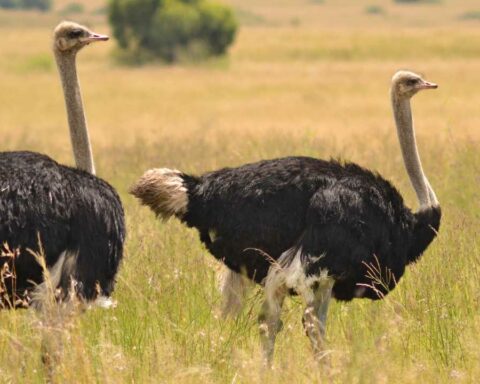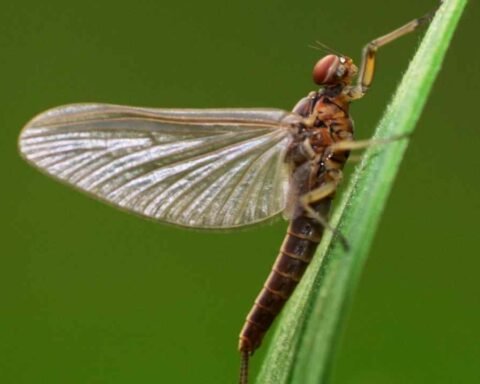The kangaroo rat (Dipodomys spp.) is a small rodent native to the arid regions of North America. These fascinating creatures have developed unique adaptations to thrive in their harsh environments, making them exemplary subjects for the study of evolution and adaptation. This article will delve into the various behavioral, physiological, and structural adaptations that enable kangaroo rats to flourish in some of the most inhospitable habitats.
Adaptations of a Kangaroo Rat
Kangaroo Rat Behavioral Adaptations
Nocturnal lifestyle:
Kangaroo rats are primarily nocturnal, which allows them to avoid the intense daytime heat and minimize water loss through evaporation.
Seed caching:
These rodents are known for their seed caching behavior, where they store seeds in multiple locations or burrows. This behavior ensures a reliable food supply and helps to distribute plant species across the desert.
Efficient foraging:
Kangaroo rats are selective foragers, preferring seeds with high water content to maintain hydration. They also have a keen sense of smell to locate food sources, even under the desert sands.
Escape tactics:
Kangaroo rats have developed a series of escape behaviors to evade predators. Their incredible jumping abilities and zigzagging movements make them difficult targets for nocturnal hunters.
Burrow systems:
Kangaroo rats build elaborate burrow systems, which provide protection from predators, insulation from temperature extremes, and a place to store food. They also build separate chambers for resting, food storage, and waste disposal.
Social interactions:
Although kangaroo rats are generally solitary animals, they do communicate with one another using a series of foot-drumming signals. These signals can convey different messages, such as warning of a predator, establishing territory, or attracting a mate.
Torpor:
During extreme temperature fluctuations or periods of food scarcity, kangaroo rats may enter a state of torpor, a short-term hibernation-like state. This reduces their energy requirements and conserves resources.
Kangaroo Rat Physiological Adaptations
Water conservation:
Kangaroo rats can survive without drinking water, obtaining necessary moisture from the seeds they consume. Their kidneys are highly efficient at concentrating urine, reducing water loss.
Metabolic water production:
Kangaroo rats can produce metabolic water by breaking down the fats in their diet, which helps to offset water loss.
Thermoregulation:
These rodents have a high tolerance for temperature fluctuations and can regulate their body temperature through behavioral and physiological means, such as adjusting their activity levels and altering blood flow patterns.
Respiratory adaptations:
Kangaroo rats have specialized nasal passages that help to minimize water loss during respiration by cooling and condensing exhaled air.
Energy conservation:
Kangaroo rats have a lower basal metabolic rate compared to similar-sized rodents, which helps conserve energy and reduce water loss.
Efficient digestion:
Their digestive systems are highly efficient at breaking down and extracting nutrients from seeds, maximizing the energy and water content they can obtain from their food.
Kangaroo Rat Structural Adaptations
Long hind legs:
Kangaroo rats have powerful hind legs, which enable them to leap distances up to 9 feet (2.75 meters) in a single bound. This not only aids in escaping predators but also helps them cover vast distances in search of food.
Fur-lined cheek pouches:
These rodents possess fur-lined cheek pouches for carrying seeds back to their burrows. The fur prevents moisture loss and protects the seeds from damage.
Large eyes:
Kangaroo rats have large, dark-adapted eyes that provide excellent night vision, allowing them to navigate and forage efficiently in the dark.
Small, external ears:
Their ears are small and can be closed to prevent sand from entering while digging burrows or during sandstorms.
Specialized feet:
Kangaroo rats have specialized feet with hair-like structures called setae on the bottom, which provide traction on loose sand and assist in digging burrows.
Tail:
Kangaroo rats have long, tufted tails that serve multiple functions. The tail acts as a counterbalance during their powerful leaps, provides additional support when standing on their hind legs, and can be used as a signal to communicate with other kangaroo rats.
Whiskers:
Their long whiskers, or vibrissae, are sensitive to touch and help kangaroo rats navigate in the dark, detect obstacles, and find food.
Compact body shape:
The compact body shape of kangaroo rats is well-suited for maneuvering through tight spaces in their burrow systems and reduces the amount of surface area exposed to the sun, helping to minimize water loss.
Kangaroo rats are exceptional examples of adaptation and resilience in the animal kingdom. They have evolved a myriad of behavioral, physiological, and structural adaptations that enable them to survive and thrive in the challenging desert environment. These extraordinary creatures offer valuable insights into the power of adaptation and the intricate mechanisms through which life persists in the harshest of habitats.








